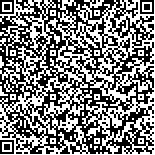| 引用本文: | 杜小换,王文娟,黄顺根,杨帆,李芳,袁树伟,王文静,姜晓琳,张伟,成晓亮,朱增燕.神经母细胞瘤患儿中伊立替康及其3种代谢物的治疗药物监测[J].中国现代应用药学,2024,41(19):95-101. |
| Du Xiaohuan,Wang Wenjuan,Huang Shungen,Yang Fan,Li Fang,Yuan Shuwei,Wang Wenjing,Jiang Xiaolin,Zhang Wei,Cheng Xiaoliang,Zhu Zengyan.Therapeutic drug monitoring of irinotecan and its three metabolites in children with neuroblastoma[J].Chin J Mod Appl Pharm(中国现代应用药学),2024,41(19):95-101. |
|
| |
|
|
| 本文已被:浏览 424次 下载 351次 |

码上扫一扫! |
|
|
| 神经母细胞瘤患儿中伊立替康及其3种代谢物的治疗药物监测 |
|
杜小换1, 王文娟1, 黄顺根1, 杨帆1, 李芳1, 袁树伟1, 王文静1, 姜晓琳1, 张伟2, 成晓亮2, 朱增燕1
|
|
1.苏州大学附属儿童医院;2.江苏品生医疗科技集团有限公司
|
|
| 摘要: |
| 摘要:目的 建立一种液相色谱串联质谱法同时测定人血清中伊立替康(IRI)及3种代谢物(SN-38、SN-38G和APC)的浓度,并将此方法应用于神经母细胞瘤(NB)患儿的治疗药物监测(TDM)。方法 均以氘代同位素为内标,EC-C18 (2.1×50 mm, 2.7 μm) 色谱柱分离,水(含0.1%甲酸)和乙腈为流动相进行梯度洗脱,流速0.3 mL·min-1,以电喷雾电离以多反应监测模式进行质谱分析。用本方法测定NB患儿血清中IRI及3种代谢物的浓度并分析IRI药动学参数与骨髓抑制毒性标志物百分比变化之间的关系。结果 通过验证,该方法符合《中国药典》(2020年版)中有关线性范围、定量下限、准确度、精密度、基质效应和稳定性的要求。相关分析结果显示,中性粒细胞百分比变化与AUCSN-38/AUCIRI (r=-0.700,P=0.036) 和AUCSN-38G/AUCSN-38 (r=0.700,P=0.036) 相关;淋巴细胞(r=-0.915,P=0.001)和血小板(r=-0.878,P=0.002)百分比变化均与AUCAPC/AUCIRI相关。结论 该方法快速、灵敏、准确度高,适用于临床实施IRI及其代谢物的TDM。NB患儿体内IRI代谢与骨髓抑制毒性之间具有一定的相关性,尚有待更大样本量的研究。 |
| 关键词: 神经母细胞瘤 儿童 伊立替康 治疗药物监测 |
| DOI: |
| 分类号: |
| 基金项目:苏州市科技发展计划项目(SLJ2021015; SKYD2022123) |
|
| Therapeutic drug monitoring of irinotecan and its three metabolites in children with neuroblastoma |
|
Du Xiaohuan1, Wang Wenjuan1, Huang Shungen1, Yang Fan1, Li Fang1, Yuan Shuwei1, Wang Wenjing1, Jiang Xiaolin1, Zhang Wei2, Cheng Xiaoliang2, Zhu Zengyan1
|
|
1.Children’s Hospital of Soochow University;2.Jiangsu Qlife Medical Technology Group Co., LTD
|
| Abstract: |
| ABSTRACT: OBJECTIVE To establish a liquid chromatography-tandem mass spectrometry (LC-MS/MS) method for the simultaneous determination of irinotecan (IRI) and three metabolites (SN-38, SN-38G and APC) concentrations in human serum, and to apply this method to therapeutic drug monitoring (TDM) in children with neuroblastoma (NB). METHODS The analytes were separated on an EC-C18 (2.1×50 mm, 2.7 μm) chromatographic column using deuterated isotopes as internal standards, with water (containing 0.1% formic acid) and acetonitrile as mobile phases in a gradient elution at a flow rate of 0.3 mL·min-1. The detection was performed with multiple reaction monitoring mode coupled with electrospray ionization source. Serum concentrations of IRI and its three metabolites were determined by this method and the relationships between IRI pharmacokinetic parameters and percentage changes in markers of myelosuppressive toxicity were analyzed. RESULTS The method was validated to meet the requirements of the Chinese Pharmacopoeia (2020 edition) regarding linearity, lower limit of quantification, accuracy, precision, matrix effect and stability. Correlation analysis showed that the percentage changes of neutrophil count were correlated with AUCSN-38/AUCIRI (r=-0.700, P=0.036) and AUCSN-38G/AUCSN-38 (r=0.700, P=0.036); the percentage changes of lymphocyte count (r=-0.915, P=0.001) and platelets (r=-0.878, P=0.002) were associated with AUCAPC/AUCIRI. CONCLUSION The method is rapid, sensitive, accurate and suitable for clinical implementation of TDM of IRI and its metabolites. There is a correlation between IRI metabolism and myelosuppressive toxicity in children with NB, which is yet to be investigated with a larger sample size. |
| Key words: neuroblastoma children irinotecan therapeutic drug monitoring |
|
|
|
|
